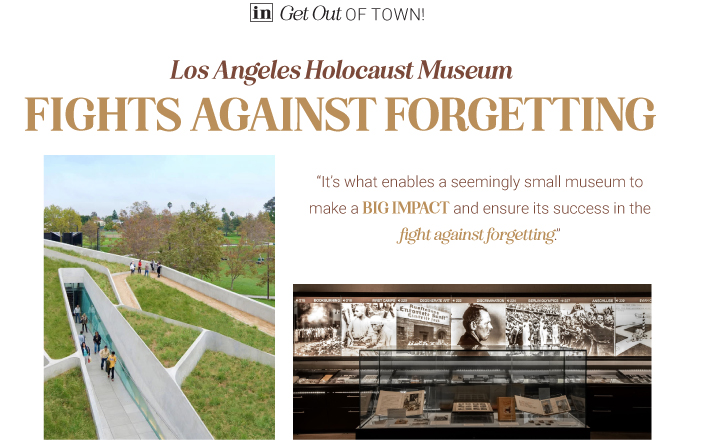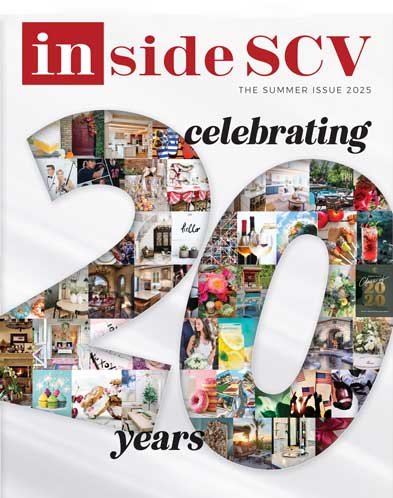EAT, DRINK & PLAY - GET OUT OF TOWN
LA Holocaust Museum Fights Against Forgetting
February, 2024 - Issue #227
 |
As museums go, the Los Angeles Holocaust Museum is not large, at least when measured by square footage or the number of items on display. But it's big enough.
After just an hour in the exhibit spaces my wife April said, "I need to be done," and made her way back to the entrance.
To achieve its goal of ensuring we remember, the museum zooms in to the individual level, telling the stories of Holocaust victims, and especially, survivors.
A current exhibit focuses on the Kindertransport, the pre-World War II evacuation of Jewish children from Germany and other European countries to England, where they lived in group homes or with foster families.
Thousands of families made the heart-rending decision to send their children abroad, knowing it was their sons' and daughters' best chance for survival while suspecting that their tearful departures would be final goodbyes.
Large pop-up banners line the main exhibit hallway, telling the stories of individual children and their families. After the uncertainty of the war, the orphans settled in new countries, came of age, found love, started families and went on to remarkable, even well-known, careers. Famous therapist Dr. Ruth Westheimer is among those featured.
"It's what enables a seemingly small museum to make a BIG IMPACT and ensure its success in the fight against forgetting."
A room is devoted to the concentration camps, using photos to explain the steps in the systematic deportation of Jews from their home countries to the camps. The exhibit is brutal, using graphic pictures to provide an unflinching record of the horror and scope of what occurred.
It's shocking, but honest. There's simply no other way to accurately depict the inhumanity of the camps. Words are not enough. That was especially evident to me while reading a letter written by an American soldier to his parents. In clear, plain language, he described what he saw. But he struggled to explain it, to make sense of it. How could he? It simply defies logic.
The most surprising thing, at least for me, was the display of front pages from American newspapers. They begin in the late 1930s when Hitler came to power in Germany and continue through the years of World War II. I had always thought, mistakenly I now realize, that the extent of the Holocaust came to light at the end of the war when the Nazi concentration camps were liberated by Allied soldiers. But there, in black and white, is convicting, shameful proof that what was happening in occupied Europe was documented in real time.
What makes the museum particularly effective is its use of multimedia. There is some text in the exhibits that you can read, but the most in-depth explanations come from the audio narration accessed through the museum's app. In many cases, the voices you hear are those who experienced the horror of the Holocaust firsthand.
That immersion is what makes the experience overwhelming. It's what enables a seemingly small museum to make a big impact and ensure its success in the fight against forgetting.
Eric Harnish lives in Castaic.
Los Angeles Holocaust Museum
holocaustmuseumla.org
|
||||||||||||||||||||||||||||




